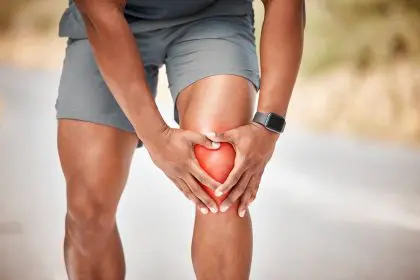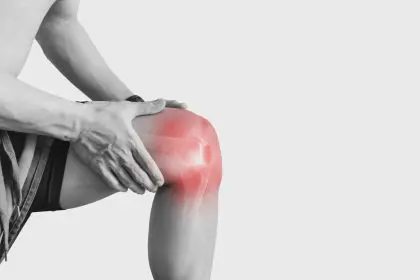These gentle yet effective techniques target inflammation and improve mobility for those suffering from hand discomfort
How arthritis affects your hands
The hands contain 27 bones and over 30 muscles, making them particularly vulnerable to arthritis pain and stiffness. When the cartilage between joints breaks down, the resulting inflammation creates the familiar symptoms of swelling, reduced range of motion, and discomfort that millions experience daily. Morning stiffness often presents the greatest challenge, with many reporting difficulty performing simple tasks like buttoning shirts or opening jars.
Regular movement remains one of the most effective approaches for maintaining hand flexibility. The exercises outlined below specifically target the common problem areas while being gentle enough for daily practice, even during flare-ups.
The science behind movement therapy
Research consistently shows that appropriate exercise not only manages symptoms but can actually improve joint function over time. The key mechanism involves increased blood flow to affected areas, which delivers nutrients while removing inflammatory compounds. Additionally, movement helps distribute synovial fluid—the natural lubricant within joints—reducing friction and discomfort.
These exercises work by gradually strengthening surrounding muscles that support the joints while maintaining flexibility in tendons and ligaments. This creates a protective effect that prevents further deterioration while improving existing function.
Best time to perform hand exercises
For optimal results, these exercises should be performed daily, preferably after a warm shower when tissues are naturally more pliable. Many find that splitting the routine between morning and evening sessions provides the best relief pattern. Each exercise needs just 5-10 repetitions, making the entire sequence completable in under 10 minutes.
Those experiencing significant pain should start with fewer repetitions and gradually increase as comfort allows. The key is consistency rather than intensity.
7 exercises for arthritis relief
- Finger taps: Rest your hand palm-down on a flat surface with fingers slightly spread. Slowly lift each finger one at a time, then tap it back down. This gentle movement improves individual finger dexterity while reducing stiffness in the metacarpophalangeal joints. Perform 8 repetitions with each finger.
- Gentle fist formation: Begin with your hand open and fingers extended. Slowly fold your fingers inward, creating a loose fist with your thumb resting outside your fingers rather than tucked under. Hold for 3 seconds, then gradually open back to the starting position. This exercise targets the entire hand while being particularly effective for the middle knuckles. Complete 10 repetitions with each hand.
- Finger walking: Place your hand palm-down on a flat surface. Slowly walk your fingers toward your thumb, then away again, creating a fan-like movement. This exercise improves lateral flexibility and reduces stiffness between fingers. Perform this movement for 30 seconds on each hand.
- Thumb touches: With your hand in a relaxed position, palm facing up, gently touch your thumb to each fingertip one at a time, creating an “O” shape with each connection. This precise movement improves thumb mobility and strengthens the opposing muscles needed for gripping objects. Perform 8 complete cycles with each hand.
- Wrist rotations: Hold your arm straight out with your palm facing down. Slowly rotate your wrist in circles, first clockwise then counterclockwise. This movement improves flexibility in the wrist joint, which supports overall hand function. Complete 10 rotations in each direction.
- Finger spreads: Begin with your fingers together, then spread them as wide apart as comfortably possible before bringing them back together. This exercise strengthens the small muscles between fingers while improving overall hand flexibility. Perform 12 repetitions with each hand.
- Thumb stretches: Gently extend your thumb away from your palm, then move it in a wide circle. This targets the carpometacarpal joint at the base of the thumb, one of the most common sites for arthritis pain. Complete 8 circles in each direction.
Enhancing exercise effectiveness
The benefits of these exercises multiply significantly when combined with proper warmth application. Before beginning, soak hands in warm (not hot) water for 2-3 minutes or apply a heating pad set to low. The increased temperature dilates blood vessels and relaxes tissues, making movements easier and more effective.
After completing the exercises, consider applying a topical anti-inflammatory cream to further reduce discomfort. Products containing natural ingredients like arnica, menthol, or capsaicin often provide temporary relief without pharmaceutical side effects.
Nutrition factors that affect joint health
Movement represents just one aspect of comprehensive arthritis management. Dietary choices significantly impact inflammation levels throughout the body, including hand joints. Foods rich in omega-3 fatty acids, such as salmon, walnuts, and flaxseeds, naturally reduce inflammatory responses.
Similarly, colorful fruits and vegetables contain antioxidants that fight free radicals that can damage joint tissues. Conversely, processed foods, refined sugars, and excessive alcohol consumption typically worsen arthritis symptoms by promoting inflammation.
Proper hydration also plays a crucial role, as well-hydrated joints move more freely. Aim for at least eight 8-ounce glasses of water daily, adjusting upward during hot weather or increased activity.
When to expect results
While individual responses vary based on arthritis type and severity, most people notice initial improvements within the first week of consistent practice. These early benefits typically include reduced morning stiffness and slightly improved grip strength.
By the two-week mark, many report significant pain reduction and better functional capacity for daily tasks. Long-term practitioners often maintain these improvements indefinitely as long as they continue with regular exercises.
However, patience remains essential, as tissue changes happen gradually. The 7-day timeframe represents when initial benefits typically begin appearing, rather than complete symptom resolution.
Signs you should modify your approach
While these exercises benefit most people with hand arthritis, certain warning signs indicate the need for adjustment. Sharp pain (versus general discomfort), increased swelling after exercise, or joint warmth may suggest excessive stress on affected areas.
In these cases, reduce repetitions or exercise intensity until symptoms subside. If discomfort persists for more than two hours after completing the routine, consider consulting a healthcare professional for personalized recommendations.
Remember that even during flare-ups, gentle movement often provides more benefit than complete rest. Simply performing the exercises with a smaller range of motion or fewer repetitions can maintain joint function without exacerbating symptoms.
Tracking your progress
Creating a simple log to document daily pain levels, stiffness duration, and functional capacity helps identify improvement patterns that might otherwise go unnoticed. Note activities that were previously difficult but become manageable as hand function improves.
Many find that taking weekly photos of their hands provides visual confirmation of reduced swelling and improved joint alignment. This visual evidence often provides motivation to continue the exercise routine even on days when enthusiasm wanes.
These gentle hand exercises offer a natural approach to managing arthritis symptoms without medication side effects or expensive equipment. With consistent practice and patience, improved hand function and reduced pain remain achievable goals for most arthritis sufferers.













